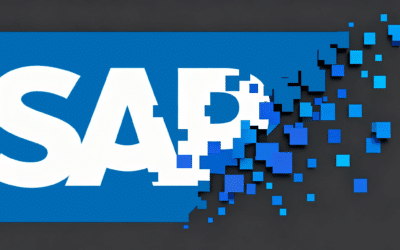
Test Environment Management – Modelling
JAN, 2023
by Jane Temov.
Jane Temov is an IT Environments Evangelist at Enov8, specializing in IT and Test Environment Management, Test Data Management, Data Security, Disaster Recovery, Release Management, Service Resilience, Configuration Management, DevOps, and Infrastructure/Cloud Migration. Jane is passionate about helping organizations optimize their IT environments for maximum efficiency.
Test Environment Management (TEM) is an essential process for ensuring the stability and consistency of the testing environment. It includes activities such as setting up the environment, monitoring and controlling the environment, and managing and maintaining the environment. A core component of TEM is Environment Modelling, which is the process of creating a virtual representation of the physical environment to create a consistent and repeatable environment for testing.
Enov8 IT & Test Environment Manager
*Innovate with Enov8
Streamlining delivery through effective transparency & control of your IT & Test Environments.
In this post, we discuss IT modelling methods, the top 5 benefits of modelling your test environment as well as Enov8’s Environment Manager tool, a powerful tool that can help you manage and control your test environments.
Knowledege Management is #1 on the Enov8 Environment Framework

What is “Test Environment Management”
Test Environment Management (TEM) is the process of managing and controlling the testing environment, including the hardware, software, and network configurations. It is used to ensure that the testing environment is in a stable and consistent state throughout the testing process. TEM includes activities such as setting up the environment, monitoring and controlling the environment, and managing and maintaining the environment. It also involves ensuring the environment is secure and compliant with the organization’s policies. TEM helps to reduce the risk of errors and accelerate the testing process.
A core component of TEM is “Environment Modelling”.
What is Environment Modelling?
Environment Modelling is the process of creating a virtual representation of the physical environment. This model is used to create a consistent and repeatable environment for testing. It allows for the environment to be manipulated and adjusted to meet specific testing goals. The model also allows for the environment to be tested in a variety of scenarios, including different hardware and software configurations. Environment Modelling helps to reduce the cost and time associated with testing, as well as to ensure that the environment is stable and consistent throughout the testing process.
Test Environment Modelling, is basically a form of IT Architecture. IT Architecture refering to the overall design of an organization’s technology systems, including hardware, software, data, security, and network systems. It involves making decisions about the structure, deployment, and integration of these systems in order to align with the organization’s goals and meet its business requirements. IT architecture also provides a blueprint for implementing new technologies and making changes to existing systems over time, ensuring that technology investments are well-planned, effective, and scalable.
Screenshot from the Enov8 CMDB, Showing Systems (Platforms) & Key Classifications:

Environment Modelling Methods
Popular techniques that we might use to model our IT architecture & IT Environments include:
1. Use Case Diagrams: These diagrams are used to model the interactions between users and the system. They help to identify the different use cases and how they interact with each other.
2. Activity Diagrams: These diagrams are used to model the workflow of a system or process. They help to identify the different activities that need to be completed in order for a process or system to function correctly.
3. Class Diagrams: These diagrams are used to model the structure of a system or application. They help to identify the different classes, their attributes, and how they interact with each other.
4. Component Diagrams: These diagrams are used to model the components of a system or application. They help to identify the different components, their relationships, and how they interact with each other.
5. Deployment Diagrams: These diagrams are used to model the deployment of an application or system in an IT environment. They help to identify where components will be deployed, how they will be connected, and what resources will be needed for them to function correctly.
6. Process Mapping: This technique is used to map out the different processes and tasks that are involved in an IT environment. It helps to identify the different steps that need to be taken in order for a process or system to function correctly.
7.Data Flow Diagrams: These diagrams are used to model the flow of data within an IT environment. They help to identify how data is transferred between different components and systems, as well as how it is stored and accessed.
8. Entity Relationship Diagrams: These diagrams are used to model the relationships between entities within an IT environment. They help to identify how entities interact with each other, as well as how they are related to each other.
9. State Transition Diagrams: These diagrams are used to model the state transitions of a system or application within an IT environment. They help to identify how a system or application changes from one state to another, as well as what triggers these changes.
The Benefits of IT Environment Modelling?
Top 5 Benefits of Modelling your Non-Production / Test Environments are:
- Strategic planning: A clear understanding of technology systems and how they support business goals, allowing for effective decision making and long-term planning.
- Better integration: A blueprint for integrating disparate systems, ensuring seamless collaboration and data exchange across the organization.
- Scalability: The ability to accommodate growth and changes in technology and business requirements, enabling the organization to adapt and remain competitive over time.
- Risk management: An understanding of potential risks and vulnerabilities in technology systems, allowing for proactive measures to be taken to mitigate them.
- Improved efficiency: The design of systems and processes to minimize redundancy and streamline operations, reducing costs and improving productivity.
In Conclusion
In conclusion, Test Environment Management is an essential process for ensuring the stability and consistency of the testing environment. Environment Modelling is a core component of TEM, which involves creating a virtual representation of the physical environment to create a consistent and repeatable environment for testing. By modelling your test environment, you can benefit from improved strategic planning, better integration, scalability, risk management and improved efficiency. Enov8’s Environment Manager tool is a powerful tool that can help you manage and control your test environments.
Innovate with Enov8 Environment Manager.
Enov8 ‘Environment Manager’ is a powerful tool that can help you model, manage and control your test environments. It helps to ensure that the environment is understood, secure and compliant with the organization’s policies, while also providing a consistent and repeatable environment for testing. Additionally, it allows for faster setup and configuration of the environment, as well as increased accuracy and efficiency of the testing process. With Enov8 Environment Manager, you can take your Environment Modelling and Knowledge Management to the next level.
Enov8 Environment Manager, Architectural Blueprinting: Screenshot

Associated Reading:
Here there be Dragons.
A short article by Enov8’s CIO on why Environment Mapping (or call it “good” Configuration Management if you wish) is so essential to controlling an organizations IT delivery capability and cost optimization. Refer: https://www.enov8.com/blog/here-there-be-dragons/
The Enov8 EMMi Assessment.
Want to know more about Environment Management & your Readiness. Why not check out the Enov8 EMMi. Enov8‘s Online EMMI Assessment is a cloud–based tool that helps organizations assess their IT environment, identify risks, and design effective strategies for mitigating those risks. The tool features a comprehensive questionnaire that collects detailed information on IT systems and processes, as well as a comprehensive risk analysis and reporting system. The tool can help organizations improve their IT security, reduce costs, and ensure compliance with industry standards and regulations.
Relevant Articles
Enterprise Release Management: A Comprehensive Guide
Enterprise Release Management (ERM) is a set of end-to-end practices that enable large organizations to effectively manage software releases. ERM is uniquely designed for the challenges of multiple teams building and releasing software simultaneously. ERM establishes...
Your Essential Test Environment Management Checklist
“Test Environment Management Checklist.” Yep, that sounds like a mouthful, but don’t let that discourage you. The idea here is quite simple—adopting a checklist to evaluate the soundness of your test environment management approach. Even though the idea sounds simple...
A Detailed Guide to SAP Data Masking
SAP systems handle some of the most sensitive data in the enterprise: financial transactions, HR information, supplier records, customer profiles, operational details, and more. For that reason, copying production data into non-production systems without modification...
Release vs Deployment Management: What’s the Difference?
In the always-an-adventure world of IT service management, there are several key processes that are essential for delivering high-quality services to customers and end-users. Two of the most critical processes are release management and deployment management....
7 Tools to Help with Application Rationalization
Application rationalization is the process of identifying which applications an organization should keep, update, consolidate, or retire. Think of it as a financial adviser, but instead of your investment portfolio, it's your application portfolio. Most companies take...
Pairing DevOps with Test Environment Management
For many organizations, DevOps is the best practice for efficiency. However, this model doesn’t come easily as the organization needs to put certain things in place. For example, the firm needs to incorporate the right tools to ensure its delivery pipeline and...










